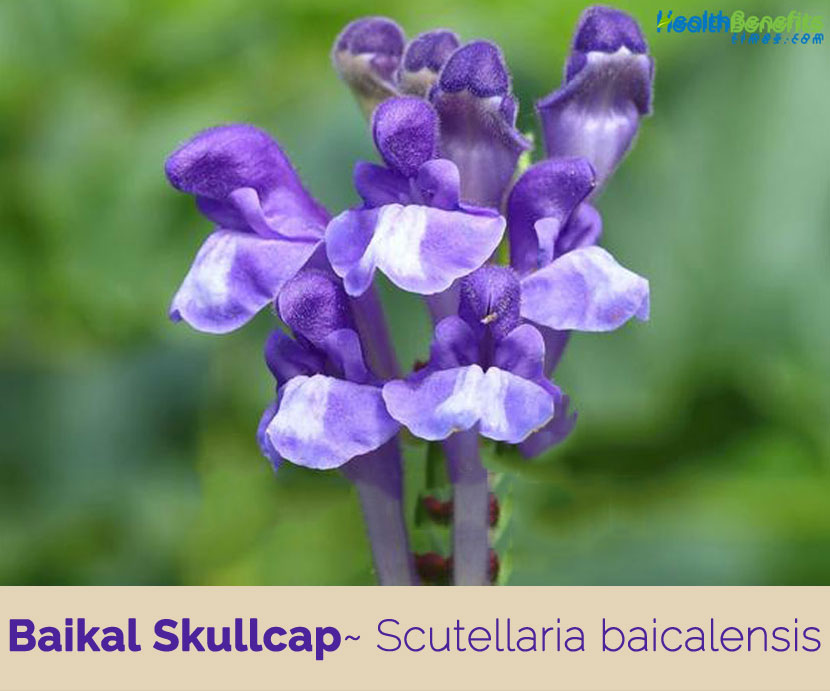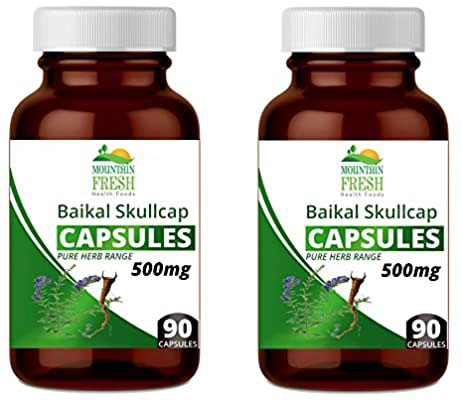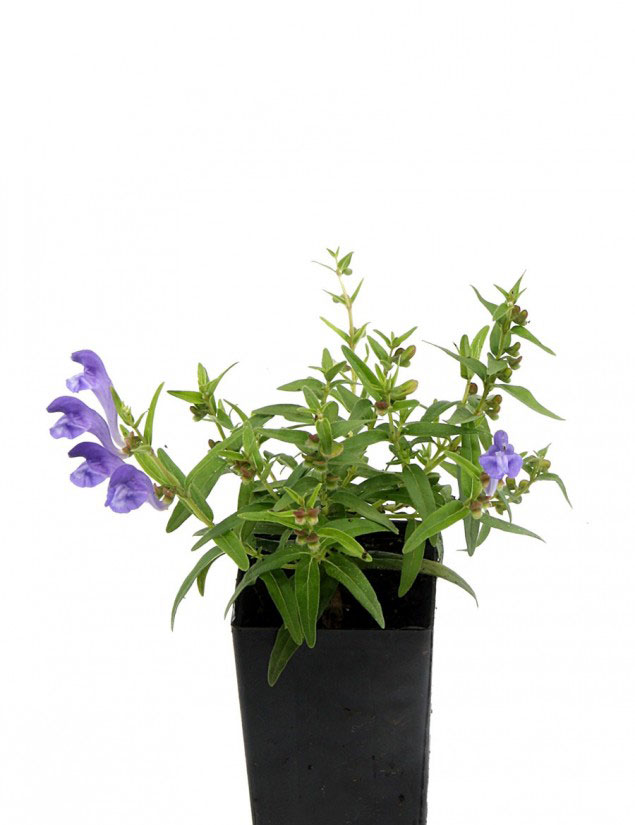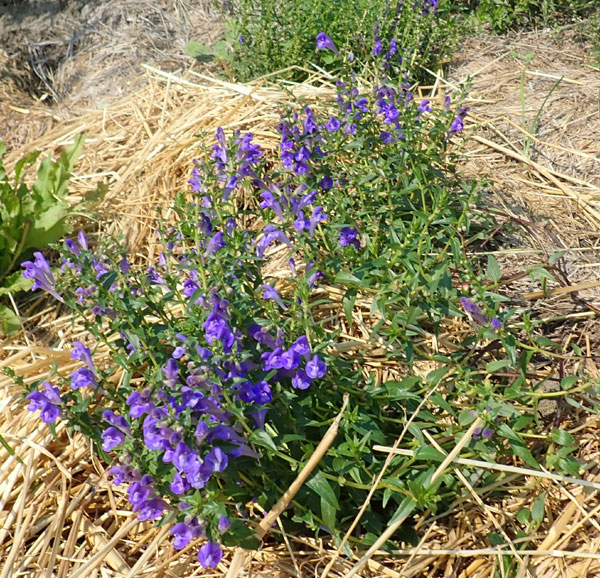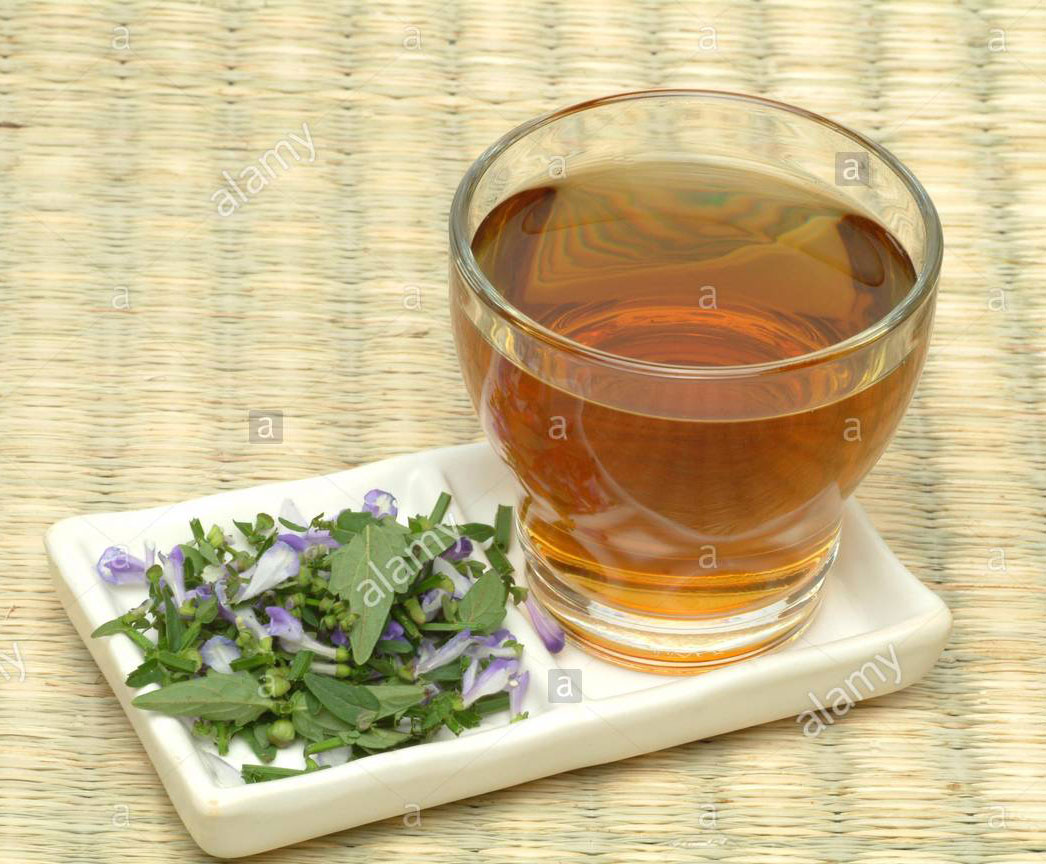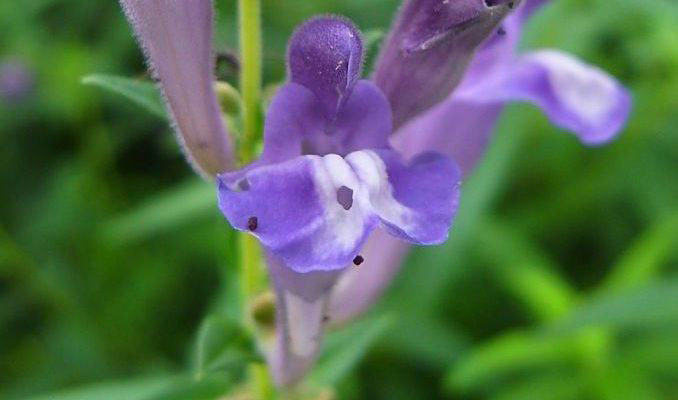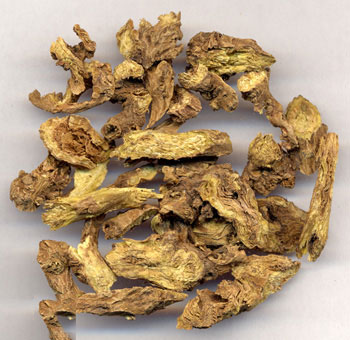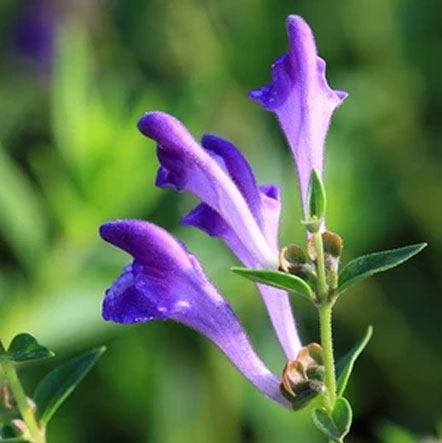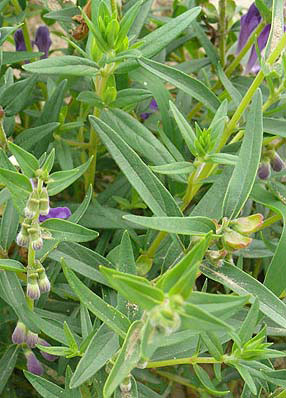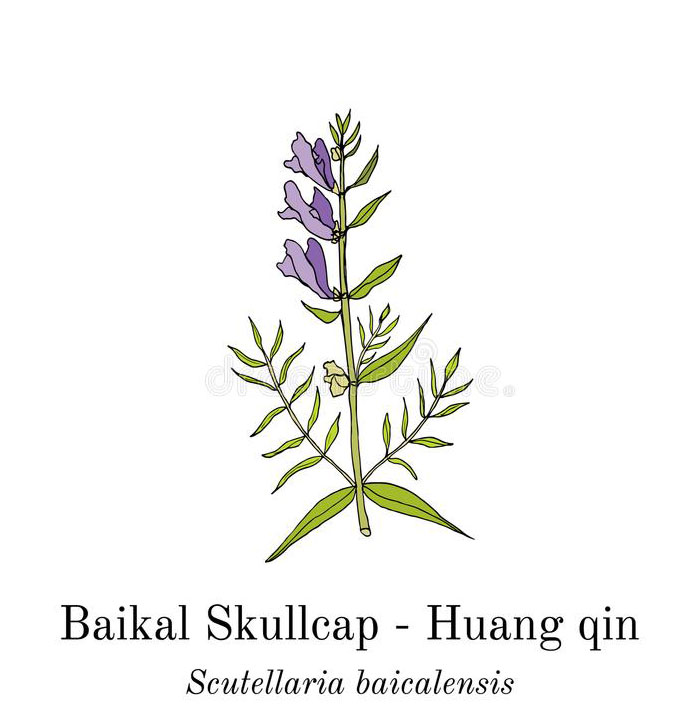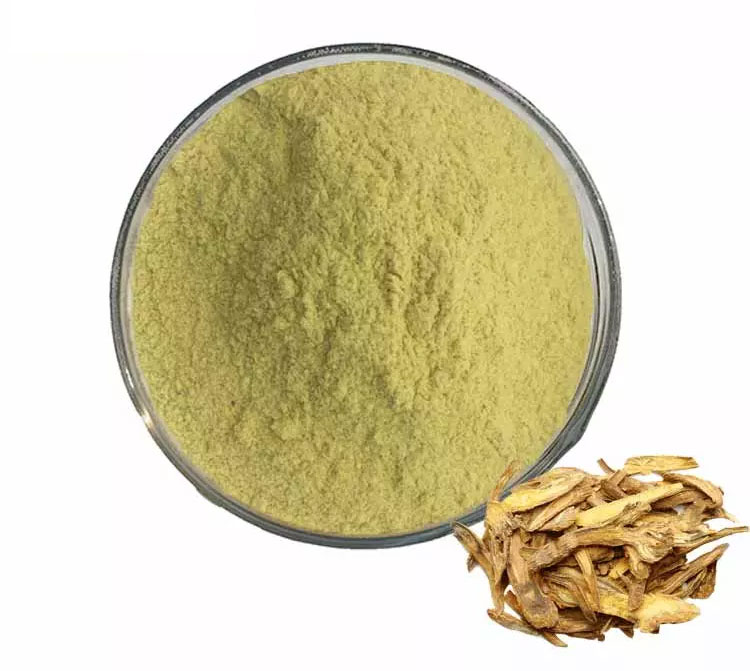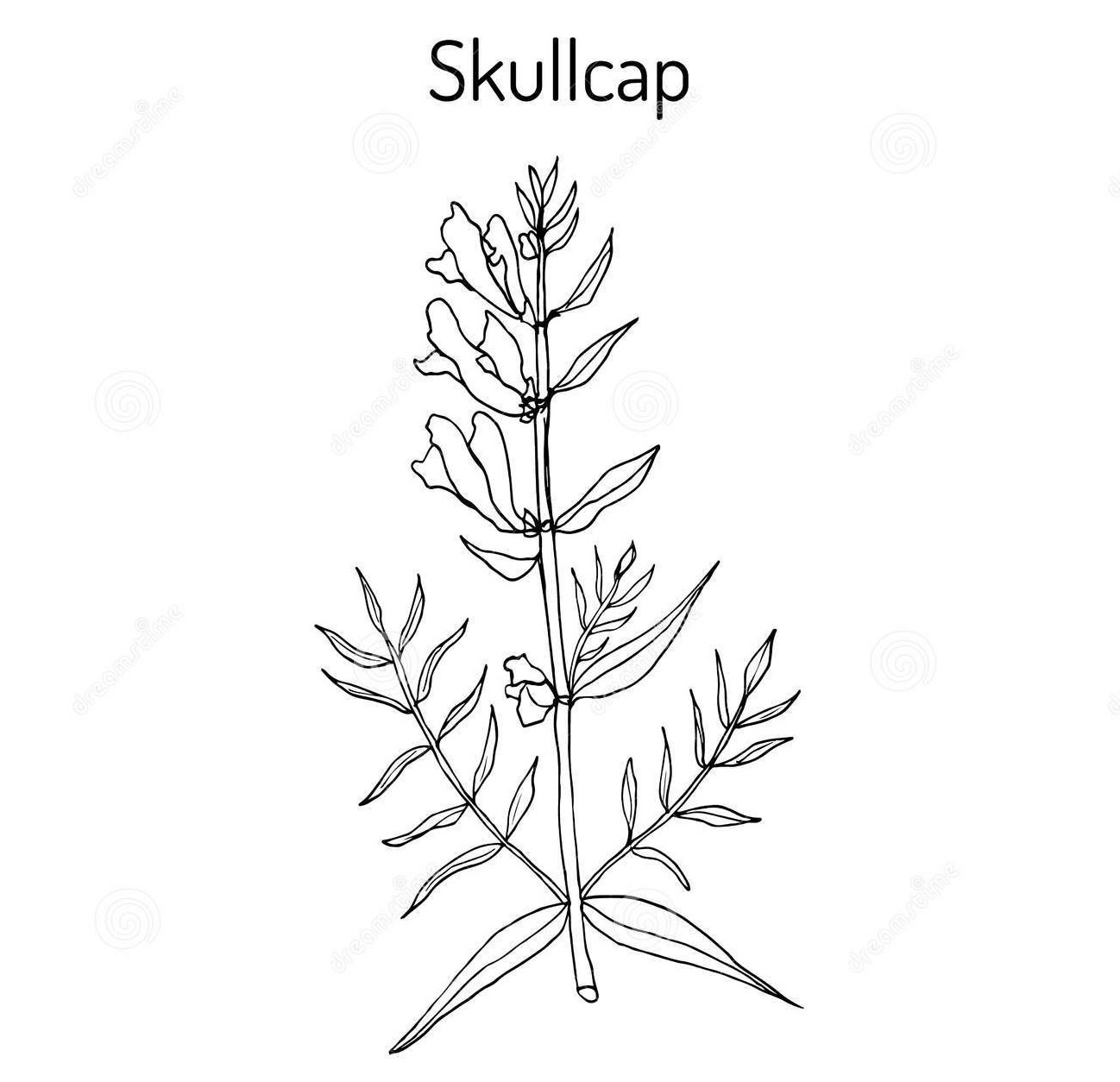| Baikal Skullcap Quick Facts | |
|---|---|
| Name: | Baikal Skullcap |
| Scientific Name: | Scutellaria baicalensis |
| Origin | China, Korea, Mongolia, and Russia in the Russian Far East and Siberia |
| Colors | Dark brown |
| Shapes | Small tuberculate nutlets, nearly globular, 1.5 mm in height and 1 mm in diameter |
| Taste | Bitter |
| Health benefits | Cure Prostate Cancer, Heals Allergic conditions, Benign Prostatic Hyperplasia, Parkinson’s disease, Cold & bitter herb, Circulatory remedy, Cures Insomnia, Menstruation |
| Name | Baikal Skullcap |
|---|---|
| Scientific Name | Scutellaria baicalensis |
| Native | China, Korea, Mongolia, and Russia in the Russian Far East and Siberia |
| Common Names | Baical skullcap, Chinese skullcap, Golden root, Huang chin, Huang lien, Huang-qin, Hwang-keum, Hwanggum, Koganebana, Senohgon, Whang-geum, Wogon, huangcen, skullcap, Hoodwort, Quaker Bonnet, Helmet Flower, Blue Skullcap, Blue Pimpernel, Hooded Willow Herb, Mad Dog Weed and Mad Weed |
| Name in Other Languages | Azerbaijani: Baykal başlıqotu Bulgarian: Baykal’skiy shlemnik (байкалски шлемник) Chinese: Huang qin English: Baikal skullcap, Chinese skullcap, Esperanto: Bajkala skutelario Estonian: Baikali tihashein French: Scutellaire du lac Baîkal German: Baikal-Helmkraut, Chinesisches Helmkraut Japanese: Koganebana (コガネバナ) Korean: Hwanggeum, sogsseogeunpul Swedish: Praktfrossört Thai: Xụ̀ng ngîm (อึ่งงิ้ม) Vietnamese: Hoàng cầm |
| Plant Growth Habit | Low growing herbaceous perennial shrub |
| Growing Climates | Sandy and rocky places near the sea shore, sunny, grassy slopes, waste ground. The plant grows well in sandy, rocky soils and needs full sun, desert lands, waste and cultivated areas |
| Soil | Soil should be well drained, but should not dry out completely and does well in cultivated planting beds |
| Plant Size | 30cm in height, but spreading up to 50-60cm wide |
| Root | 5–25 cm long, 0.5–3.0 cm in diameter, conical, twisted, or flattened root. They are dark brown and woody on the outside, and bright yellow inside |
| Stem | Tetragonal, erect, branching near base, pubescent in the stem margins |
| Leaf | Lanceolate to linear‐lanceolate, 1.5–4.5 cm in length and 0.5–1.2 cm in width |
| Flowering season | July to August |
| Flower | Blue-purple flowers that are helmet shaped on the upper part and have a skirt, wide like lobe on the underneath |
| Fruit Shape & Size | Bunch of small tuberculate nutlets, nearly globular |
| Fruit Color | Dark brown |
| Propagation | By seeds |
| Plants Parts Used | Root |
| Available Forms | Capsules, tea, extract, powder, infusion and tincture |
| Taste | Bitter |
| Season | August -September |
| Lifespan | As short as three years |
| Health Benefits |
|
Plant Description
Baikal Skullcap is a low growing herbaceous perennial shrub that normally grows about 30 cm in height, but spreading up to 50-60 cm wide. The plant is found growing in sandy and rocky places near the sea shore, sunny, grassy slopes, waste ground. The plant grows well in sandy, rocky soils and needs full sun, desert lands, waste and cultivated areas. Soil should be well drained, but should not dry out completely and does well in cultivated planting beds. The plant can moderately withstand the harsh temperatures and grows easily. It is a perennial plant with a life cycle of at least 3 years. The plant has 5–25 cm long, 0.5–3.0 cm in diameter, conical, twisted, or flattened root. They are dark brown and woody on the outside and bright yellow inside. Stem is tetragonal, erect, branching near base, pubescent in the stem margins.
Leaves
The leaves are lanceolate to linear‐lanceolate, 1.5–4.5 cm in length and 0.5–1.2 cm in width. The top of the leaf is dark green, and the color below is lighter. The petiole is short, about 2 mm long with abdomen concave and convex, and puberulent.
Flower
The plant blooms from July to August to produce blue-purple flowers that are helmet shaped on the upper part and have a skirt, wide like lobe on the underneath. The flowers are tubular and are held together in one side with long stalks adding more height to the plant. Its corolla is purple, purple–red and blue. And its length is 2.3–3 cm. There are four pairs of stamens. The filaments are flat, the styles are slender, the disc is ring‐shaped, and the ovary is brown.
Fruits
Fertile flowers are followed by a bunch of small tuberculate nutlets, nearly globular, dark brown with a tumour, and 1.5 mm in height and 1 mm in diameter and leathery in appearance
History
Baikal skullcap is a Chinese medicinal herb that was used for over 2,000 years to treat fevers, hypertension, coughing, and other ailments, and is used today as a traditional remedy for dysentery and diarrhea. Baikal skullcap was included as an ingredient in several pharmaceutical combination preparations found in a second century AD tomb in northwestern China.
Baikal skullcap is recommended in China for fever, cough, GI, and urinary problems. These uses have been supported by clinical trials. Baikal skullcap is also used in Chinese herbal medicine for inflammation, allergies, dermatitis, hyperlipidemia, and atherosclerosis.
Health benefits of Baikal Skullcap
It has been extensively used as a medicinal plant in China for decades. Its traditional use has been for microbial infections, inflammation, diarrhea, dysentery, hypertension, hemorrhaging, insomnia, cholesterol management, and respiratory infections. It has a number of health benefits which are mentioned below
1. Cure Prostate Cancer
Research has recommended that the compounds found in skullcap may help slow the growth of prostate cancer tumors. Skullcap was a constituent of the herbal formula PC-SPES, a dietary supplement that was taken off the market because some batches were found to contain prescription medications.(1)
Although a number of laboratory and animal research showed that PC-SPES may prevent the growth of prostate cancer cells, it’s not known if those anticancer effects were due to the action of the herbs or the prescription medications.
2. Heals Allergic conditions
Baikal Skullcap is beneficial for dealing with allergic conditions like asthma, hay fever, eczema, and nettle rash. Flavonoids in particular prevent the inflammatory processes in the body that lead to allergic reactions.
3. Benign Prostatic Hyperplasia
Research on rats has discovered that Chinese skullcap can prevent the development of benign prostatic hyperplasia (BPH) by suppressing abnormal androgen and relieving inflammation. More research is required before recommending skullcap in humans.(2)
4. Parkinson’s disease
Research on mice discovered that baicalein (another skullcap-derived antioxidant) may help protect nerve cells from damage related with Parkinson’s disease (a chronic condition that causes tremor, stiffness of the limbs and trunk, impaired balance and coordination, and slowing of movement).(3)
5. Cold & bitter herb
In traditional Chinese medicine, Baikal skullcap is “cold” and “bitter” herb. It is recommended in China for hot and thirsty conditions such as high fevers, coughs with thick yellow phlegm, and gastrointestinal infections that cause diarrhea, as well as dysentery. It is also given to people suffering from painful urinary conditions.
6. Circulatory remedy
Baikal skullcap is a wonderful cure for the circulation. Together with other herbs, it is used to treat high blood pressure, arteriosclerosis, varicose veins, and easy bruising.
7. Cures Insomnia
Baikal Skullcap is quite beneficial for insomnia and sleep disorders. While many remedies, both traditional and herbal, can calm you to sleep like skullcap, most leave you sleepy in the morning. Skullcap encourages sound sleep without the unwanted side effects, leaving you feeling refreshed and revitalized in the morning.
8. Menstruation
It is supposed to be one of the excellent women’s herbs; Baikal Skullcap consists of large amounts of flavonoids, including scutellarin and baicalin, which are thought to be the active components accounting for its sedative and antispasmodic activity. This antispasmodic activity makes it an extremely effective herb for menstrual cramps and it calming action aids PMT symptoms. It has also been used traditionally for centuries to stimulate menstrual bleeding; however more research is necessary to confirm this claim.
Traditional uses and benefits of Baikal Skullcap
- Baikal skullcap is commonly used in Chinese herbalism, where it is considered to be one of the 50 fundamental herbs and is used primarily in treating “hot and damp” conditions such as dysentery and diarrhea.
- It has been used medicinally for over 2,000 years and recent research has found that the roots consist of flavonoids that impressively improve liver function and also have anti-inflammatory and anti-allergenic effects.
- Root is anodyne, antibacterial, anti-cholesterolemic, anti-pyretic, antispasmodic, astringent, cholagogue, diuretic, expectorant, febrifuge, hemostatic, laxative, nervine, mildly sedative, stomachic and tonic (for TB).
- It reputedly calms the fetus in pregnant women.
- Root is used internally in the treatment of enteritis, dysentery, diarrhea, jaundice, chronic hepatitis, urinary tract infections, hypertension, threatened miscarriage, nosebleed and hemorrhage from the lungs or bowel.
- Seed is used to cleanse the bowels of blood and pus and for the treatment of prostate cancer.
- It is one of the most widely used crude drugs for the treatment of bronchitis, hepatitis, diarrhea, and tumors.
- It is used to clear heat and dry dampness.
- It treats diseases associated with heat as fever, irritability, thirst, cough and expectoration of thick, yellow sputum.
- It also treats damp diseases as diarrhea, feeling of heaviness of chest and painful urination.
- It is used in the treatment of Hepatitis. It is useful to cure infections and inflammation of respiratory, digestive and urinary system.
- It is used to treat chronic inflammatory conditions such as asthma, arthritis and allergy.
- Chinese skullcap may even have anti-cancer properties and could be especially helpful for bladder and liver cancer.
- The herb could prove useful as an herbal treatment for hepatitis.
- In traditional Chinese medicine Baikal skullcap is used to treat common cold, irritability, , infections accompanied by fever, gout, jaundice, nosebleed, vaginal bleeding, abdominal pain and redness of the eyes and face.
- The herb is often combined with other medicinal herbs to combat high cholesterol and triglycerides, high blood pressure, allergic diseases and inflammatory skin diseases.
- People suffering from painful urinary conditions also benefits from using remedies made from the Baical skullcap.
- Extensive use of the baikal skullcap is now also suggested to treat all kinds of allergic conditions.
- It is useful in treating all sorts of digestive infections and problems associated with the gastrointestinal tract.
- It is used to treat high blood pressure, problems like arteriosclerosis, disorders such as varicose veins, and to prevent easy bruising of the skin.
- It is used for treating infections of the kidneys, pelvic inflammation, swellings and sores as well as HIV/ AIDS.
Culinary Uses
- Young leaves can be cooked as a vegetable.
- The whole plant is dried and used as a tea substitute.
- The leaves of this plant are used for vegetable and salad dishes.
Dosage and Administration
This root is mostly available in bulk powder form or as capsules. When using the capsule form then follow the manufacturer’s instruction.
Use 5 to 15 grams of the powdered root added to 1 cup of boiling water to make a tea.
The Chinese skullcap root is usually decocted but it can also be fried or cooked whole to treat various disorders.
Precautions
- The pregnant and breastfeeding women are often recommended to avoid consuming this plant to ensure they are safe.
- It reduces blood clotting too.
- Do not use it if you weakened with diarrhea.
- Consult with your doctor before consuming it if you are suffering from diseases like blood diseases, abdominal pain, edema and menses scanty.
- People with diabetes should not take Chinese skullcap without consulting a doctor as it may lower blood sugar, increasing the risk of hypoglycemia.
- Baikal skullcap might increase the risk of bruising and bleeding in people with bleeding disorders.
- It might cause extra bleeding during and after surgery. Stop using Baikal skullcap at least 2 weeks before a scheduled surgery.
- Avoid Chinese skullcap if you have stomach or spleen problems.
- If very high doses are taken, this plant could trigger convulsions, confusion, involuntary muscle contractions and even stupor.
References:
https://pfaf.org/user/Plant.aspx?LatinName=Scutellaria+baicalensis
https://www.drugs.com/npp/baical-skullcap.html
https://npgsweb.ars-grin.gov/gringlobal/taxonomydetail.aspx?id=33424
https://en.wikipedia.org/wiki/Scutellaria_baicalensis
https://edis.ifas.ufl.edu/ep564
https://davesgarden.com/guides/pf/go/88033/#b
https://www.cabi.org/isc/datasheet/48879
http://www.theplantlist.org/tpl1.1/record/kew-188938
https://www.researchgate.net/publication/328191500_Scutellaria_Baicalensis_Georgi
https://www.mskcc.org/cancer-care/integrative-medicine/herbs/scutellaria-baicalensis


